In the small colonial community of Victoria in 1861, sixteen-year-old Kate Harding is trying to help her mother as she is about to give premature birth in their home. While mother and daughter make it through the grueling ordeal with the help of a local midwife, the baby does not live. The irony of this tragic event is that Kate’s father is one of the few doctors in the colony, but he was out tending to other patients at the time. Wild Bird takes readers up close as a young girl yearns to find her place through meaningful work, while the author describes the ways in which Indigenous people relate to the recently arrived settlers.
colonization
If You Lived During The Plimoth Thanksgiving
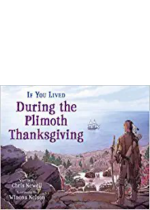
What if you lived in a different time and place? What would you wear? What would you eat? How would your daily life be different?
Scholastic’s If You Lived… series answers all of kids’ most important questions about events in American history. With a question and answer format, kid-friendly artwork, and engaging information, this series is the perfect partner for the classroom and for history-loving readers.
What if you lived when the English colonists and the Wampanoag people shared a feast at Plimoth? What would you have worn? What would you have eaten? What was the true story of the feast that we now know as the first Thanksgiving and how did it become a national holiday?
Chris Newell answers all these questions and more in this comprehensive dive into the feast at Plimoth and the history leading up to it. Carefully crafted to explore both sides of this historical event, this book is a great choice for Thanksgiving units, and for teaching children about this popular holiday.
The People Shall Continue
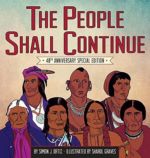
Traces the progress of the Indians of North America from the time of the Creation to the present.
Further discussion of this book found in WOW Currents: Indigenous Children’s Literature: Stories Matter, Part IV.
El Pueblo Seguirá
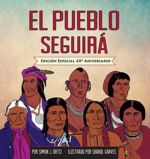
Told in the rhythms of traditional oral narrative, this telling of the history of the Native/Indigenous peoples of North America recounts their story from Creation to the invasion and usurpation of Native lands. As more and more people arrived, The People saw that the new men did not respect the land. The People witnessed the destruction of their Nations and the enslavement of their people. The People fought hard, but eventually agreed to stop fighting and signed treaties. Many things changed and became more difficult, but The People continued to farm and create crafts. They remembered and told their children, “You are Shawnee. You are Lakota. You are Pima. You are Acoma…. You are all these Nations of the People.” The People held onto their beliefs and customs and found solidarity with other oppressed people. And despite struggles against greed, destruction of their lands, and oppression, The People persisted.
Anacaona, Golden Flower, Haiti, 1490
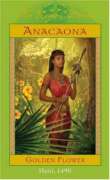
With her signature narrative grace, Edwidge Danticat brings Haiti’s beautiful queen Anacaona to life. Queen Anacaona was the wife of one of her island’s rulers, and a composer of songs and poems, making her popular among her people. Haiti was relatively quiet until the Spanish conquistadors discovered the island and began to settle there in 1492. The Spaniards treated the natives very cruelly, and when the natives revolted, the Spanish governor of Haiti ordered the arrests of several native nobles, including Anacaona, who was eventually captured and executed, to the horror of her people.
All My Noble Dreams and Then What Happens
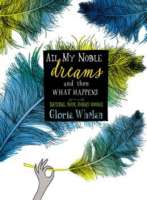
As Rosalind continues to straddle the proper English world of her family and the culture of 1920s India where they live, her support of Gandhi and his followers in opposing British rule grows and she considers trying to carry the rebels’ message to Edward, Prince of Wales, during his visit.
Kiwi Moon
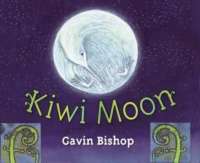
Created by well-known children’s writer and illustrator Gavin Bishop, this is the story of a little white kiwi. When he is born his mother doesn’t recognise him because he’s not brown. Little Kiwi looks to the moon as his mother instead because it is white and bright and round. In the background of this story we see the changing times of a nearby pa. Through illustrations only we see intertribal warfare, the death of the chief, English soldiers arriving and then the burning of the pa. This fire spreads and the two stories become one as the white kiwi’s habitat is razed to the ground.On the surface this is a very simple story but it also contains themes of intertribal warfare, European colonisation of New Zealand, Maori/Pakeha relations, and conservation. There is a lot to savour on each page – with Gavin’s stunning illustrations of the main kiwi story, the on-going images of the pa, plus close-ups of insects and plants.
African Beginnings
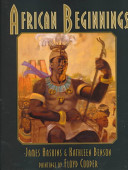
From the ancient kingdom of Kush, whose black pharaohs ruled Egypt for nearly a century, to the sixteenth-century empire of the Kongo, whose emperor was so powerful he was able to halt the trade in slaves for a number of years, the African continent rang with a series of glorious civilizations that have had a lasting impact on the world’s history, and on American culture. James Haskins and Floyd Cooper have won numerous awards for their books for young people, including several Coretta Scott King Honor awards.
Silverwing
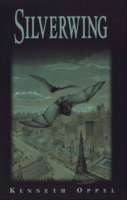
Shade is the runt of his Silverwing bat colony, determined to prove himself on the perilous migration to Hibernaculum. During a fierce storm, he loses the others and soon faces the most incredible journey of his short life.
In the Land of the Jaguar: South America and Its People
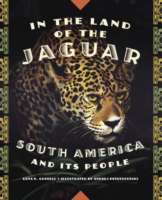
South America’s story is as varied as its geography of soaring mountains, scorching deserts, and lush rainforests. This book combines an often tragic history with the problems and triumphs of the present. The information ranges from “the Requirement” (a document read out by the conquistadors each time they came upon a new group of indigenous people to justify their actions) to drug cartels, from the hidden and secretive Elders (a civilization that retreated to the mountains to preserve its customs) to Gabriel García Márquez. Includes maps, an index, and bibliography.
